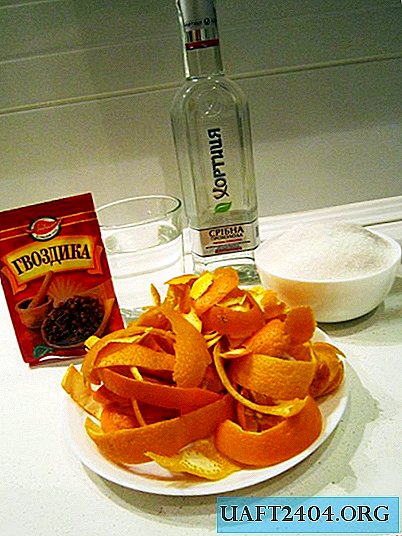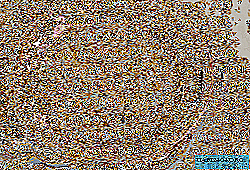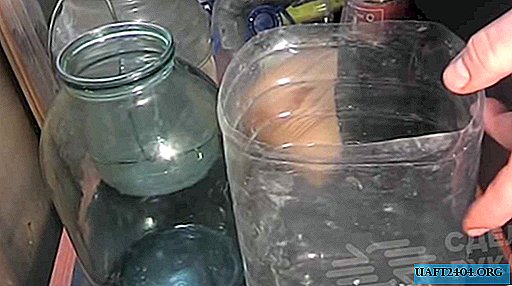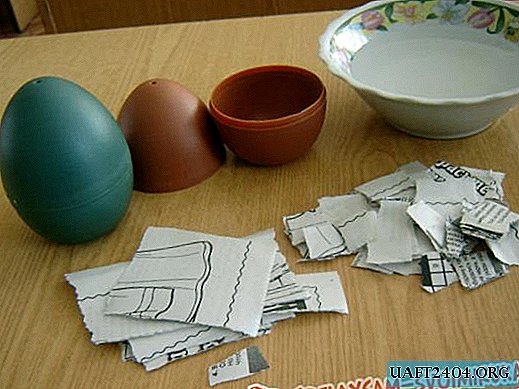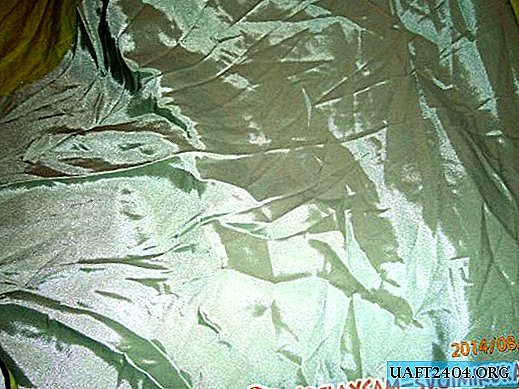Share
Pin
Tweet
Send
Share
Send
Milk bags, plastic bottles are not the best option for a feeder. We bring to your attention eco-feeders, which are easy and interesting to do.
As a "building" material you will need: cardboard and ribbons (inlay, narrow satin ribbon or just a rope).
Food: seeds and grains (millet, seeds, oatmeal, wheat and any other), crushed peas, berries (frozen cranberries, currants, mountain ash, viburnum are great), raisins, grated cheese, etc. It is not recommended to use rice or buckwheat: after ingestion, they swell and cause pain to the birds.
Flour and a container for making flour paste will also be needed.
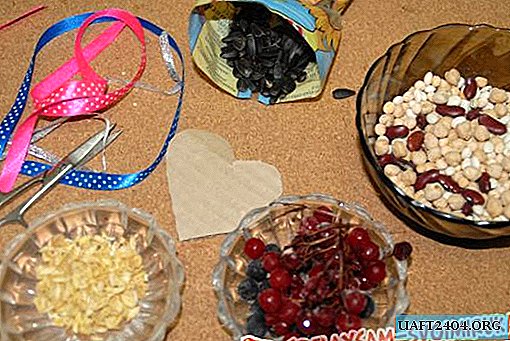

Lay us the table feed in flat containers. For convenience, it is better to cover the table with a napkin, paper, oilcloth, as in the process of preparing the feeder cereals, flakes scatter and scatter in different directions. Make blanks of ribbon strings about 50 cm long (so that the ribbons do not open, you can burn the ends gently over the fire).


We prepare the basis of cardboard: any figures (hearts, flowers, fish, etc.) with a height of not more than 10 cm with a hole for the ribbon, for which you will then hang an eco-feeder on a tree. Instead of cardboard, you can use bread (it is more difficult to cut something unusual, but the feeder will be 100 percent environmentally friendly).


Now prepare the flour paste. Pour the flour into a small container, fill with cold water and mix thoroughly until the sour cream is thick (in this order and only with cold water, otherwise a homogeneous mass will not work). Then put on fire and cook, stirring constantly, for a while. Control the density of the mixture (it should maintain the consistency of sour cream): it will thicken on fire.
We turn to the process of manufacturing an eco-feeder. We put flour paste on a cardboard figure, leaving holes for the ribbons free. The layer should be thick enough so that the grains and flakes are slightly buried in it.
Pour the feed itself onto this base, pressing it slightly with your fingers. It all depends on the imagination of you and your child: different parts of the figure can be laid out with different food colors, you can lay out a pattern, etc.


The figure should not be turned over immediately. You need to let it dry for about 20 minutes. After that, put the paste on the back and lay out the pattern. Now the workpiece should dry well before the paste has hardened.
It remains to pull the tape or rope into the holes and the eco-feeder is ready!

Share
Pin
Tweet
Send
Share
Send

